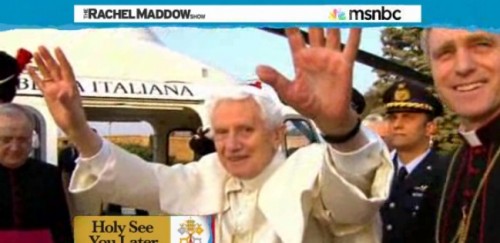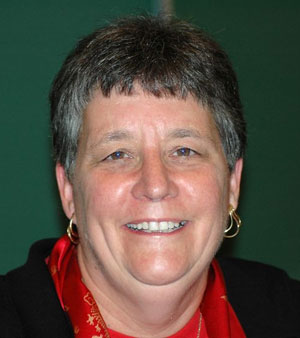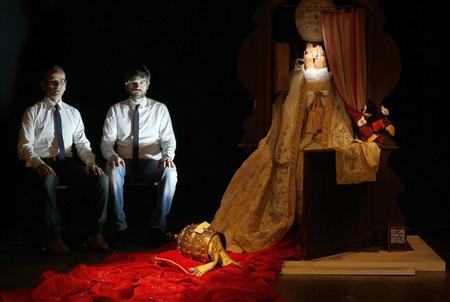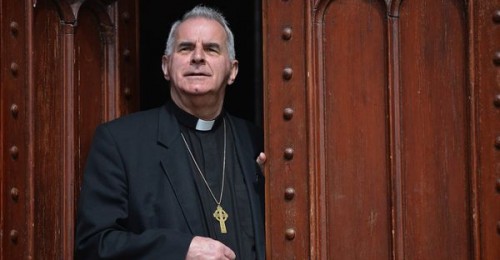I thought this was a particularly insightful article. A bit dated, but still.
By Paolo Flores d’Arcais
“There’s no place for a Pope Emeritus,” John Paul II (born Karol Józef Wojtyła) declared dryly as recently as 1994. Yet beginning at 8 PM today, we have an Emeritus Pope, with consequences for the Catholic Church that are impossible to overstate. The decision announced two and a half weeks ago by Joseph Ratzinger—from now on simply ex-Benedict XVI—took a kind of courage that many cardinals and men of the curia find rash; some see it rather as a sign of weakness bordering on cowardice.
 Indeed, Ratzinger’s decision has the momentous effect of desacralizing the Papacy, reducing it, in the minds of the faithful, to the office of a great religious leader and nothing more. This is a paradoxical outcome for a Pope who can claim (from his point of view) a notable record of success, having brought to completion the process begun by Wojtyła of reestablishing traditional Church doctrine and the conservative hierarchy that had been challenged after the Vatican II Council.
Indeed, Ratzinger’s decision has the momentous effect of desacralizing the Papacy, reducing it, in the minds of the faithful, to the office of a great religious leader and nothing more. This is a paradoxical outcome for a Pope who can claim (from his point of view) a notable record of success, having brought to completion the process begun by Wojtyła of reestablishing traditional Church doctrine and the conservative hierarchy that had been challenged after the Vatican II Council.
The Pope is often described as the world’s last absolute sovereign, but he is more than that. The Pope is—or was—an absolute sovereign who also had, in the eyes of his believers, a unique aura as the Vicar of Christ on Earth, representing the Holy Spirit in the Holy Trinity—a Deputy God, in other words. But an ex-Deputy God is meaningless. The Bishop of Rome will now become merely the leader of a church, like the Archbishop of Canterbury, even if he has vastly more members in his flock than his English counterpart.
And here is a second paradox. By stepping down, Ratzinger has given credence to the more “secularist” view of the modern Church put forward by his longtime antagonist Hans Küng and by the most progressive members of the Vatican II Council, whose influence Ratzinger had succeeded in marginalizing. In short, the Catholic Church now has to contemplate the coexistence of an Emeritus Pope and a Pope-Pope. The new Pope will certainly exercise the full powers of the Papacy (on the assumption that the ex-Pope will truly withdraw to a life of seclusion and prayer), but he will no longer have a divine aura.
Why then did Benedict XVI make such an extreme decision? Why did he want to discard the seemingly inviolable tradition of leaving the length of Papal tenure up to God, even when the Pope reaches a point of great frailty, with the certainty that the Holy Spirit would transcend the human inadequacy of the pastor? The long decline of Wojtyła was a very recent and decisive example of the Church’s adherence to that exceptional principle.
In contrast, by emphasizing his own physical decline, Ratzinger has introduced an element of rational human calculation into the question of what is “good for the Church”: an approach that in fact suggests a more limited view of the Holy Spirit’s gifts, which are presumed to guarantee papal infallibility at all times. It is a further paradox that the Pope’s recourse to such worldly realism has been blamed on a cowardly desire to evade responsibility precisely for the misdeeds of the most worldly members of the Church hierarchy. (We might add that if Ratzinger’s decision is a demonstration of humility, then we must consider Wotjyla’s decision to remain in power during his long illness arrogant.)
Yet Benedict XVI has explained that he prefers to retire because, as he put it,
in order to govern the bark of St. Peter and proclaim the gospel, both strength of mind and body are necessary, strength which in the last few months has deteriorated in me to the extent that I have had to recognize my incapacity to adequately fulfill the ministry entrusted to me.
Ratzinger emphasized “strength of mind” because that is the key to his reasoning; he added in his statement that he is “well aware of the gravity of this decision.”
In what sense can Benedict XVI regard himself as being unable to “adequately fulfill” his ministry? After all, under his leadership, the Church hierarchy has become more unified than ever; there are no longer major doctrinal rifts between “progressives” and “conservatives.” Never have the bishops shown such doctrinal homogeneity; the last voice that was out of tune with the choir was that of the late Cardinal Martini, who described the Church, in an interview published posthumously last year, as “two hundred years out of date.”
Beyond the Church as well, the theologian-Pope can boast of considerable achievements. Jürgen Habermas, Europe’s leading secular philosopher, has praised his thought; not to mention Julia Kristeva and other fashionable intellectuals in ultra-secular Paris. Indeed, Ratzinger’s counter-enlightenment critique has appealed to a surprisingly long list of secular admirers: for example, his suggestion to non-believers to lead their lives veluti si Deus daretur, as if God existed, because without God, and the ethical principles connected to God, Western society is heading toward collapse.
There is one area of his pontificate, however, in which Benedict XVI can claim “mea culpa, mea culpa, mea maxima culpa”: the administration of the Church in the stricter sense of the Roman curia itself. The feud among cardinals that turned the inner sanctum of the Vatican into a vipers’ nest, the war between factions that has unfolded beneath the frescoes of Michelangelo and Raphael, with shining daggers and poison, in the fatal form of secret dossiers and blackmail.
This battle, the so-called Vatileaks controversy, has been provoked by two problems in particular: the twin scandals of priest pedophiles and the Vatican bank (IOR), which is under investigation for money laundering and mismanagement. Sex and money, the seductions of Mammon to which prelates robed in purple, the symbol of their Christian devotion “till martyrdom,” should be perfectly immune.
Ratzinger chose to deal with these problems in the most circumspect and gradual manner. His efforts to uncover the iniquity of priests, and even that of the rogue finance of the Vatican bank, met with enormous resistance, setting in motion a Catherine’s Wheel of machinations. The pedophile crisis (and the related scandal over the powerful Legion of Christ and its leader, the notorious Marcial Maciel Degollado) was the one area in which Ratzinger had had a major disagreement with Wojtyła. Then-Cardinal Ratzinger insisted that the Polish Pope take a firm and clear stand, but was over-ruled by more powerful members of the Curia at a point when John Paul II, by then in the final years of his illness, was largely incapable of governing—a specter that surely played into Benedict’s XVI own decision to retire.
Vatileaks was only the tip of the iceberg, as even lay observers of the Church are now aware. The secret internal investigation of the Vatican leaks submitted in December by Cardinals Julian Herranz, Josef Tomko, and Salvatore De Giorgi must have shaken the Pope. As La Repubblica has now reported, the investigation apparently describes a hugely influential “homosexual underground” within the Curia, while documenting at length the ferocious struggle among cardinals and factions. Even worse, Tarcisio Bertone, the Vatican Secretary of State and the Pope’s closest advisor going back to the time when Ratzinger was in charge of the Doctrine of the Faith, seems to be up to his neck in the allegations.
Benedict XVI was unable to take sides in this internal struggle, because Bertone’s rivals themselves are not shining with sanctity. (Bertone’s predecessor and archenemy, Cardinal Sodano, was one of the long-time protectors of Degollado, the disgraced former Legion of Christ leader.) Confronted with such an overflowing sewer of Church filth, Benedict XVI instead decided to surrender, pleading his own incapacity and choosing the only alternative still open to him: prayer.
Complete Article HERE!




